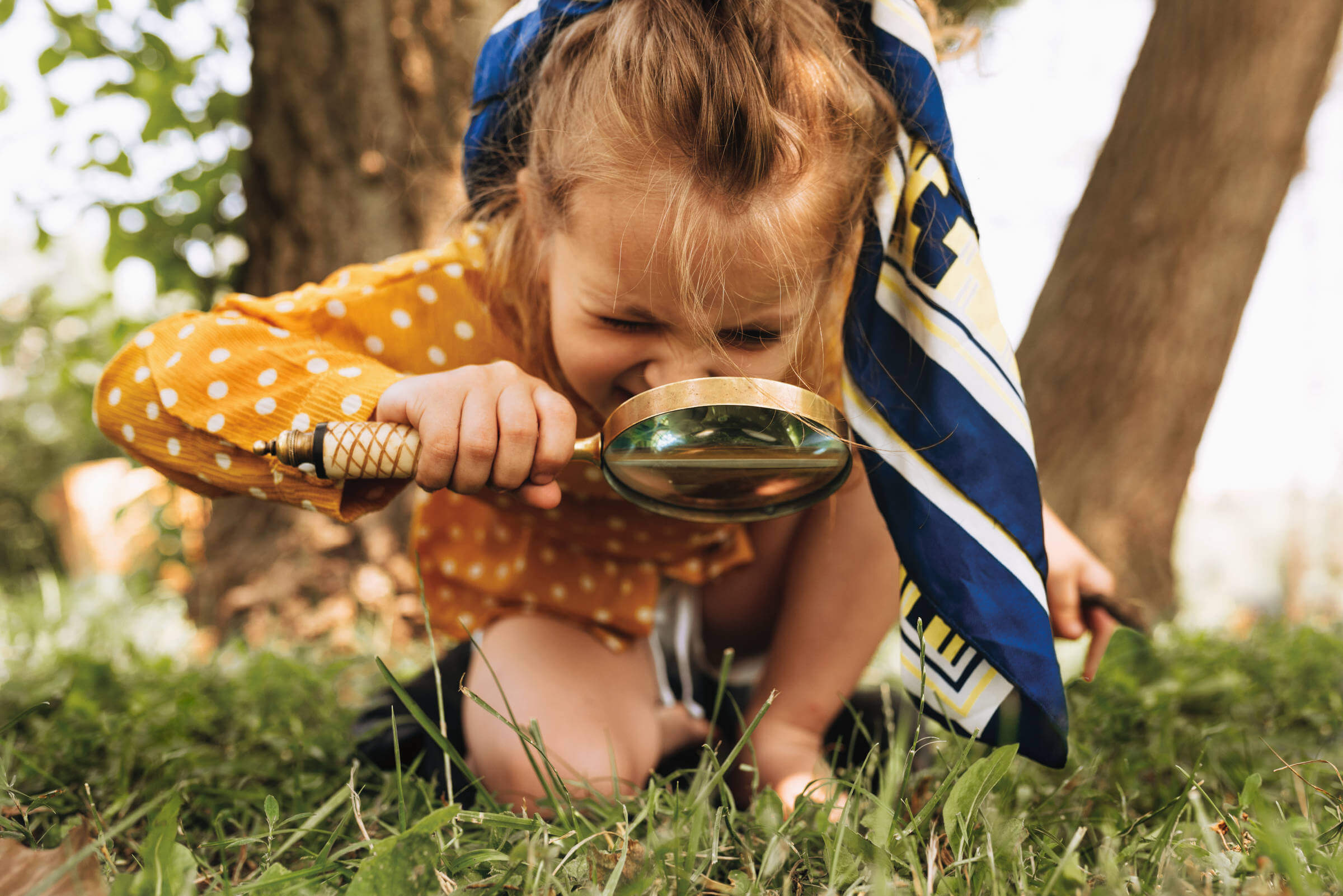
Enhancing
Science Learning
One Book at a Time
WITH SCIENCE STORY TIME
Children are naturally curious. They constantly want to learn about the world around them and how things work, and engaging with informational science-themed picture books can provide young children opportunities to explore and learn about their world in the safety and comfort of their own homes.
Picture books are especially interesting to young children, and the detailed images and informational text found in high-quality books can support science learning in several key ways.
Reading informational science-themed picture books also can help children acquire new knowledge and develop understanding of real world concepts. For example, reading high-quality scence-themed picture books can help children develop their vocabulary by exposing them to specific terms they might not typically encounter in their daily lives. Informational picture books can also expose children to language and practices used by scientists, potentially encouraging children to engage in science practices themselves. like asking questions, observing, communicating, predicting and drawing conclusions.
FRIDAYS AND SATURDAYS AT 10:15AM | SUNDAYS AT 11:30AM
(Recommended for children ages 3–6)
Learn more at slsc.org/programs/science-storytime.
Science-themed picture books enable children to connect science to their daily lives. When they read about and discuss science concepts, they connect science to their own experiences and interests. Engagement with science-related informational books can potentially foster a child’s interest in and curiosity for science.
Caregivers can help promote science learning when reading with children by asking questions and encouraging discussion before, during and after reading. Retelling is a way to facilitate comprehension and help children make meaning of what they read, while repeated readings of a book enable children to develop a deeper understanding of concepts and can also lead to more complex discussions.
Join us at the Science Center’s Energy Stage on Fridays, Saturdays and Sundays for Science Story Time, where our early childhood educators share a wonderful science-themed picture book perfect for young scientists and their grown-ups alike.
Animals in Winter (Let’s Find Out Science)
By Henrietta Bancroft, et al., 1996
My First Book of Planets: All About the Solar System for Kids
By Bruce Betts, PhD, 2020
Forces: Physical Science for Kids
By Andi Diehn, 2018
Growing Vegetable Soup
By Lois Ehlert, 1990
Time to Sleep
By Denise Fleming, 2001
The Book of Brilliant Bugs
By Jess French, 2020
Dreaming Up: A Celebration of Building
By Christy Hale, 2012
All About Weather: A First Weather Book for Kids
By Huda Harajli, 2021
I Use Science Tools
By Kelli Hicks, 2011
Pumpkin Jack
By Will Hubbell, 2000
Shark Lady: The True Story of How Eugenie Clark Became the Ocean’s Most Fearless Scientist
By Jess Keating, 2018
What is a Scientist?
By Barbara Lehn, 1998
I Am a Bee
By Rebecca McDonald, 2019
Over and Under the Snow
By Kate Messner and Christopher Silas Neal, 2014
Drop: An Adventure Through the Water Cycle
By Emily Kate Moon, 2021
Because of an Acorn
By Lola M. Schaefer, et al., 2016
Do You Know Which Ones Will Grow
By Susan A. Shea and Tom Slaughter, 2011
Look Inside Your Body
By Louie Stowell, 2013


MEET THE TEAM
Matt Gandolfo
Q: Matt, how long have you been at the Science Center?
A: I’ve been here for seven and a half years.
Q: Where can guests typically find you in the building?
A: Makerspace mostly, but I’m trained in all of the galleries and help wherever needed.
Q: What are some of the STEAM topics you’re interested in?
A: I’m really interested in engineering—specifically additive manufacturing or “3D printing.” But I’m also a huge fan of space and the vehicles that get us there, past, present and future!
Q: What are some recent examples of activities you’ve helped facilitate for members and guests?
A: We offered an activity late last year where we walked members through assembling an ornament made from laser-cut wood and an LED light. Then, we recently offered a workshop where guests could work with real carpentry tools to build a simple box. It was a hands-on offering geared towards our teenage guests and they really enjoyed it.
Q: Can you tell us a little about some of your favorite interactions with guests and members of the community?
A: I love that moment of seeing someone’s eyes light up as I’m explaining something, that Aha! moment when something clicks and they understand it just a little bit more. But a very close second is the “Whoa! Cool!” that we often get with the things we create in Makerspace, and then being able to show someone how it’s made and how it works.

CRAZY
CONTRAPTIONS
in Makerspace
Makerspace is an interactive community-oriented space at the Saint Louis Science Center where you can create and learn skills using a variety of tools and materials. The free gallery is located on the Second Floor and is recommended for kids 7 and up.
Join us in Makerspace during March, April and May for “Crazy Contraptions.” In this Makerspace workshop, guests will use our Rigamajig and some special add-on kits to build crazy contraptions!
Crazy Contraptions will be offered daily in the Makerspace Classroom from 2:00pm–4:00pm.
Learn more about Makerspace at slsc.org/makerspace.











